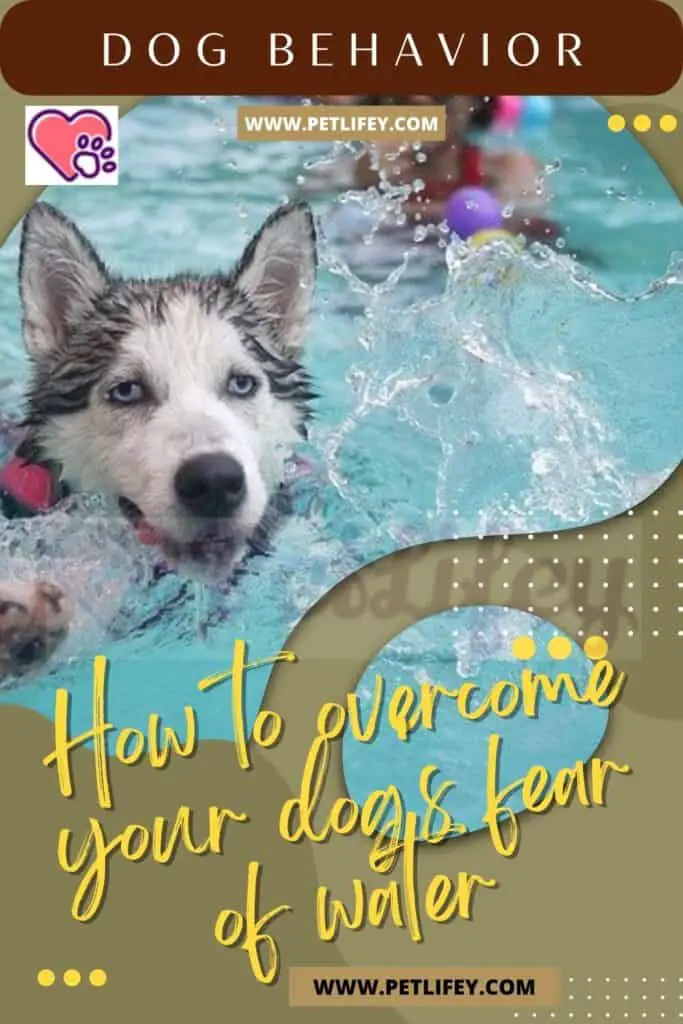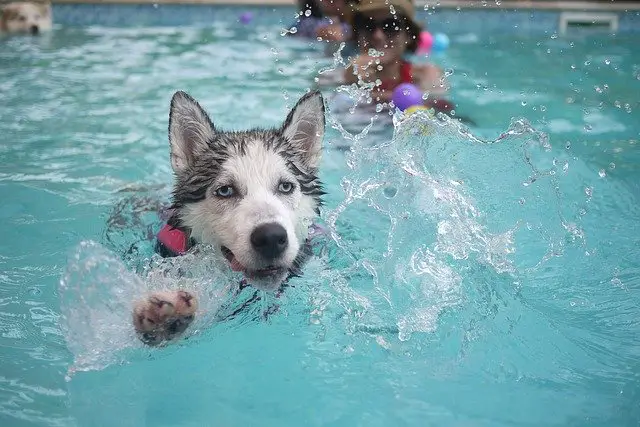
Although dogs have a reputation for loving water, this doesn’t happen to everyone as many fear it. Is your dog afraid of water? If so, you have surely wondered if it is possible to overcome this fear and, if so, in what way. So let’s try together to better understand this problem so that we can overcome any fear and transform contact with water into a healthier opportunity for play and fun.
Can Dogs Overcome Their Fear of Water?

To prevent your dog from being afraid of water, we recommend that you take these simple steps into consideration:
Not all dogs love to swim
The fact that all dogs know how to swim, by instinct, from birth, is not entirely true. There are in fact a series of races that, with the aquatic environment, have very little feeling. To give you some examples, it will be enough to mention types of dogs such as the pug, the French bulldog, the greyhound… If it is true that there are other very skilled specimens such as the Labrador or the Newfoundland, the so-called water dogs, of course there are others that, when they see a lake or the sea, well they run away to the other side.
Show them water as fun
It is normal for your dog to fear water, like anything new or unexpected, if he does not know or has never seen it. Therefore, it is better to have a first contact by entering the sea or lake with him. By accompanying them, it will feel safer and more protected, and it will be easier to lose fear. Maybe the next time he sees water, it’ll throw himself into it.
This learning process will be much more effective if you put it into practice when the animal is still a puppy, before six months of age. An ideal time for training and learning. You will avoid possible future trauma. Enter the water together, play with it, calmly and without sudden movements, talking to your four- legged friend in a slow and calm tone. Choose a windless day with few waves, keeping the animal in an area where it can touch.
Life jacket for dogs
Although dogs learn to swim quickly, it is not advisable to force them, much less leave them alone. In fact, after the first entry into the water, your dog may get disoriented, get tired and start ingesting water. If you decide to go with them to the sea or the lake, you will have to take additional precautions that go far beyond the simple feeling of giving him security and making them understand the water as a friend, a game.
To make the animal more peaceful, and to avoid any possible surprises, it is advisable to have your friend wear a life jacket for dogs. Not only will it allow them to stay afloat, but above all it will always make them visible and, in an emergency, you too can hook up to them and swim together to the shore or to the edge of the pool.
Positive reinforcement
You will see how once you put on the jacket and put it in the water, your little dog will instinctively start moving its paws. Encourage them by calling them by name and pet them by repeating that he is swimming well, very well! Then take them out of the water and offer them a snack as a treat. In this way it will associate swimming with a game for which it will even receive their favorite treats!
Repeat this exercise several times, each time extending the time spent in the water. Your pet will gradually become familiar with the aquatic medium. At this point, you can give it a try without a vest, obviously standing next to the animal and supporting it with your arms. Over time, you will notice that the dog will have gained confidence and will be able to enter the water, swim and go out virtually on their own.
Use toys
It is likely that, after the first successes, a little fear of water may return in your beloved dog. Again, the watchword is patience. You will have to be good at studying a good strategy so that the dog spends more time in the water and associates that moment with fun. There are many floating toys on the market for your pet. Pick some brightly colored, soft and durable ones to get bitten and toss them into the water. You will see that, in this way, the animal will get distracted and give less importance to fear, preferring by far to play with its master.
Don’t forget that fear can turn into phobia. Therefore, do not force the animal at any time. Try to teach them to love water gradually, always using positive reinforcement and with patience, affection, perseverance and love.






